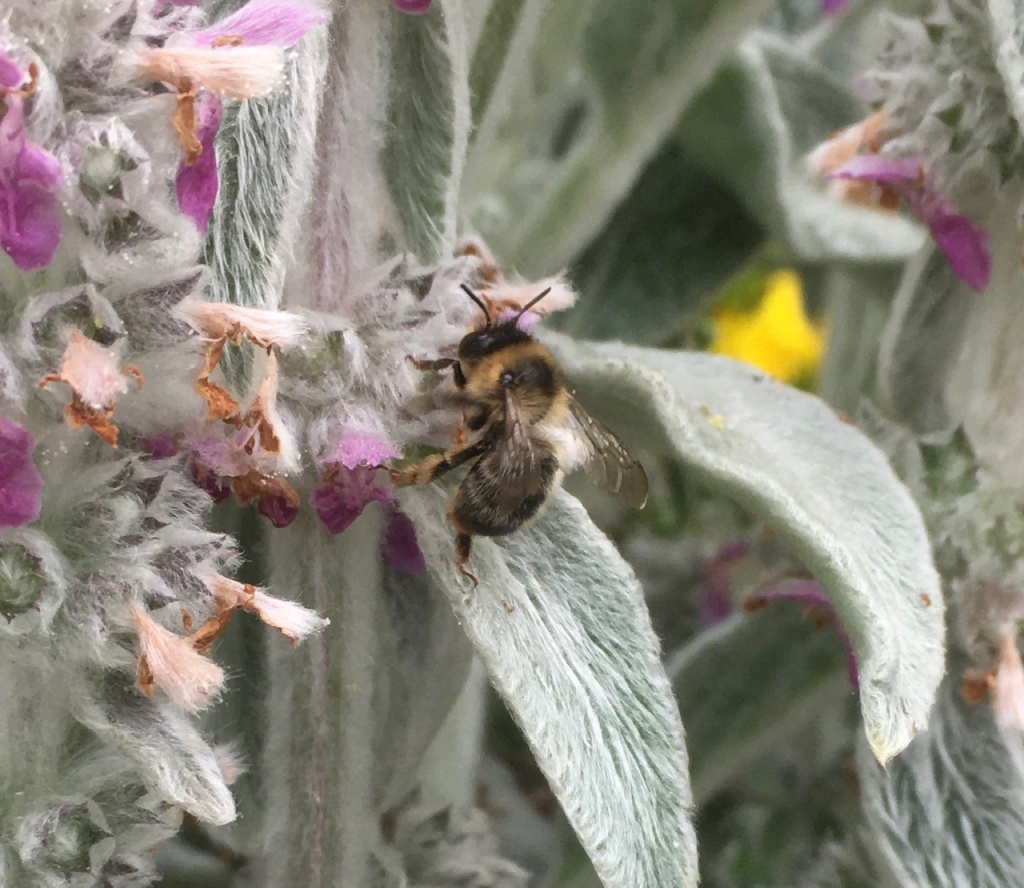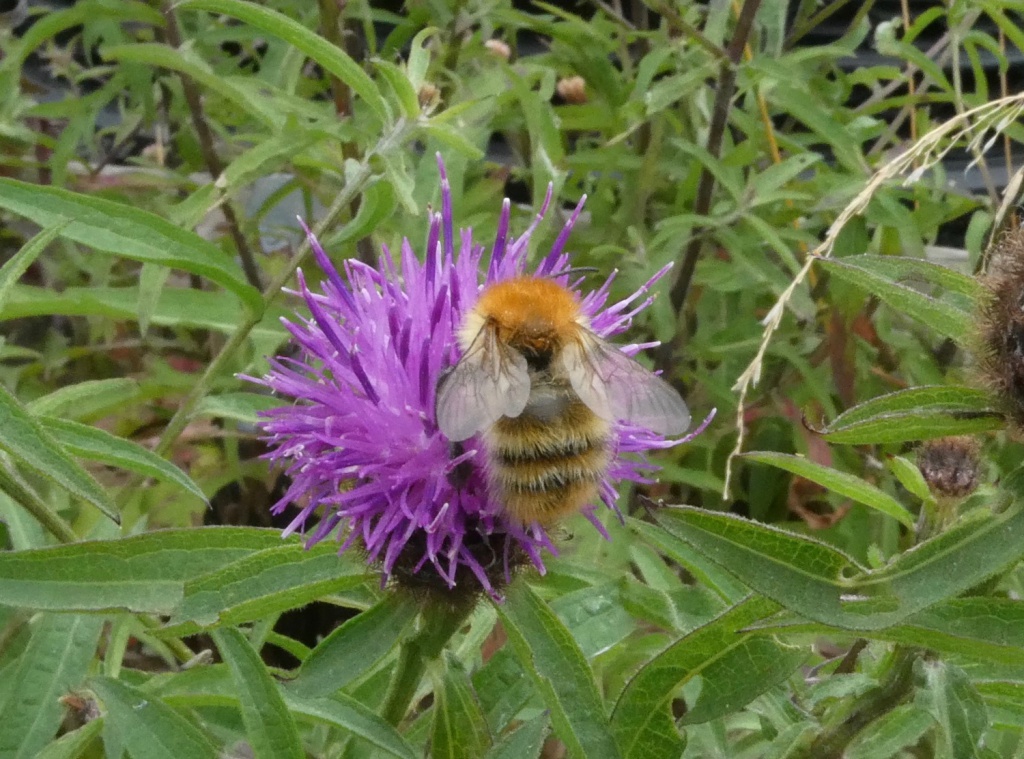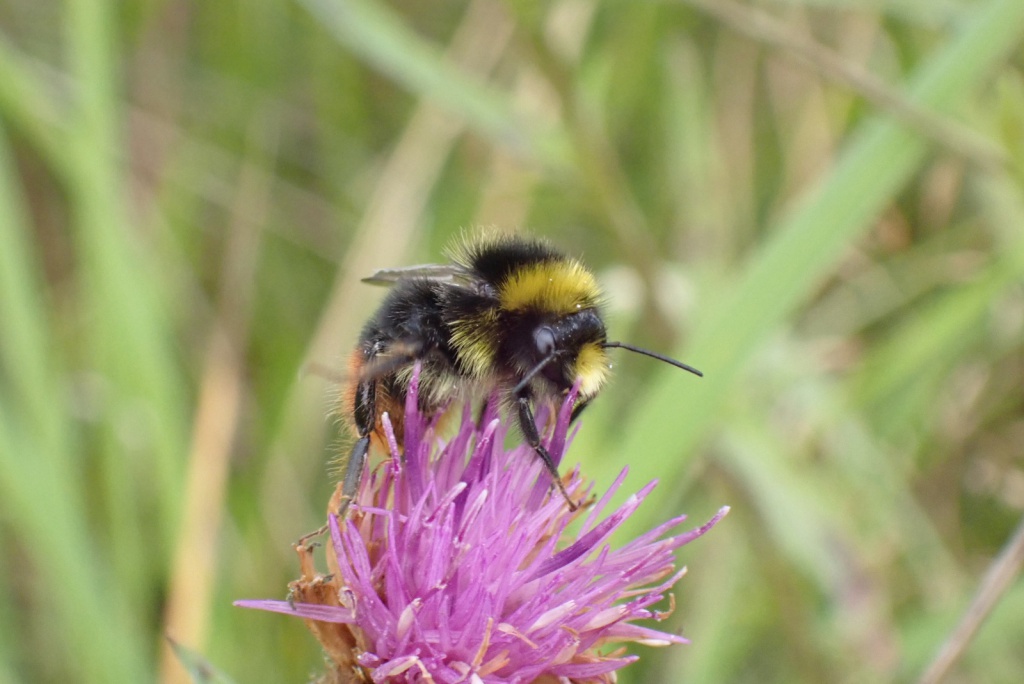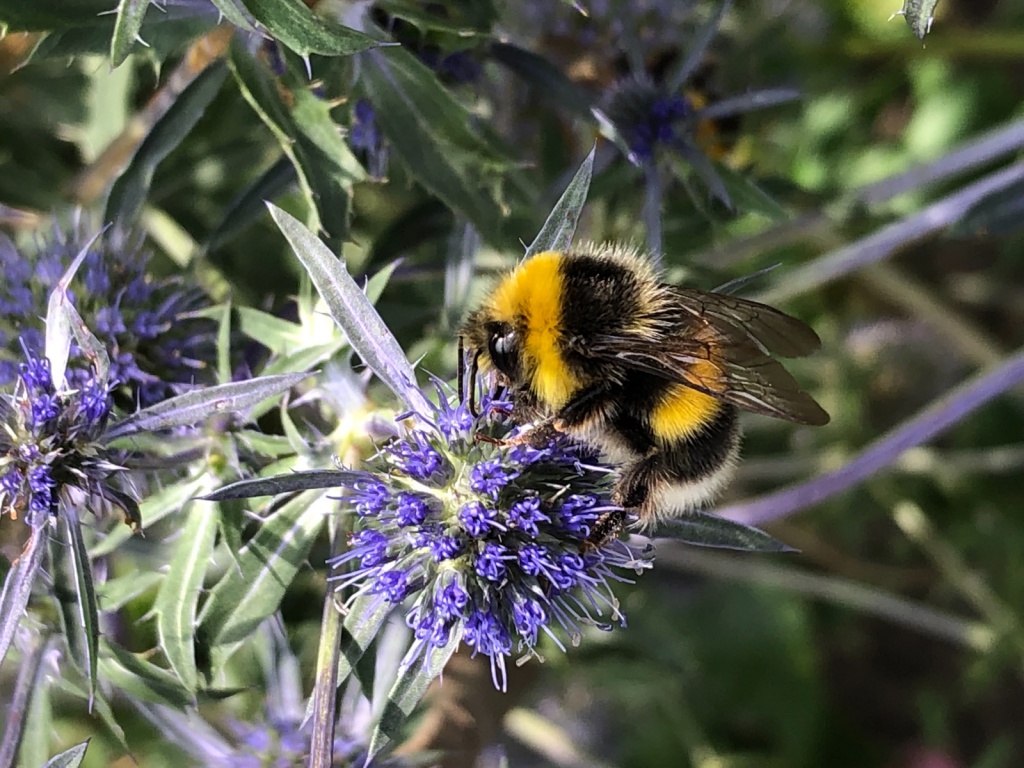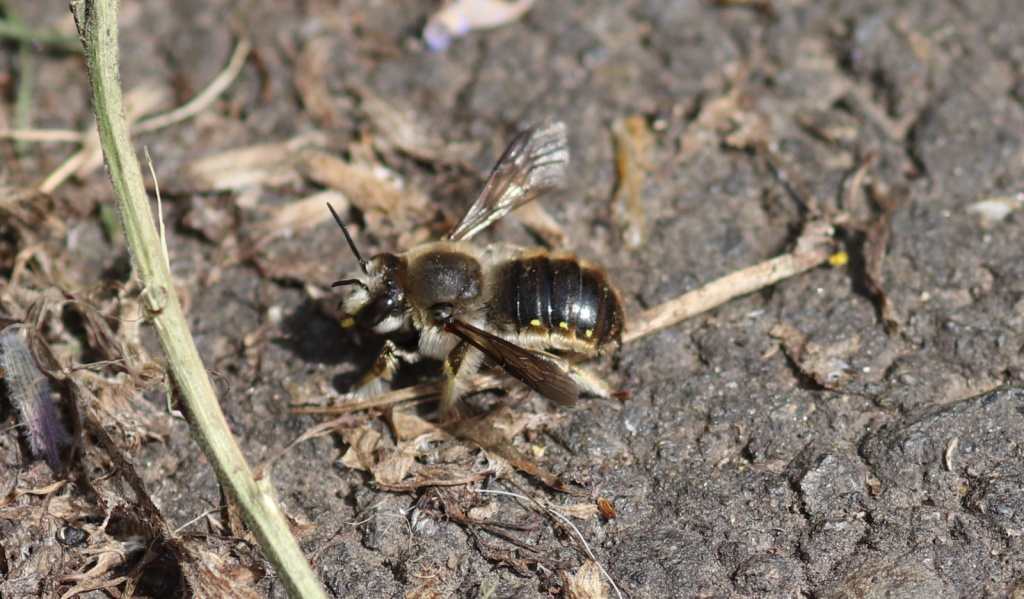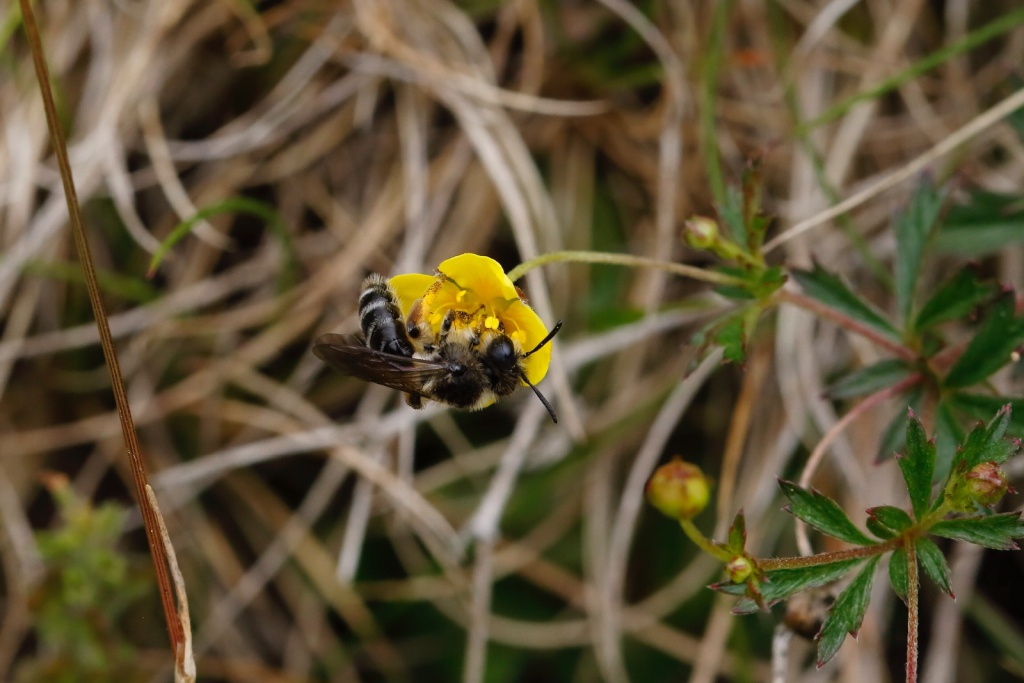Explore your North East Bee Hunt highlights this summer in a new blog from local naturalist, Charlotte Rankin.
Together, you have shared almost 4,000 bee records this year as part of the North East Bee Hunt. From the first queen bumblebees to the late summer solitary bees, your records will help inform monitoring and conservation efforts of these vital pollinators. Please do continue to send your records from spring and summer to help put more bees on the region’s map.
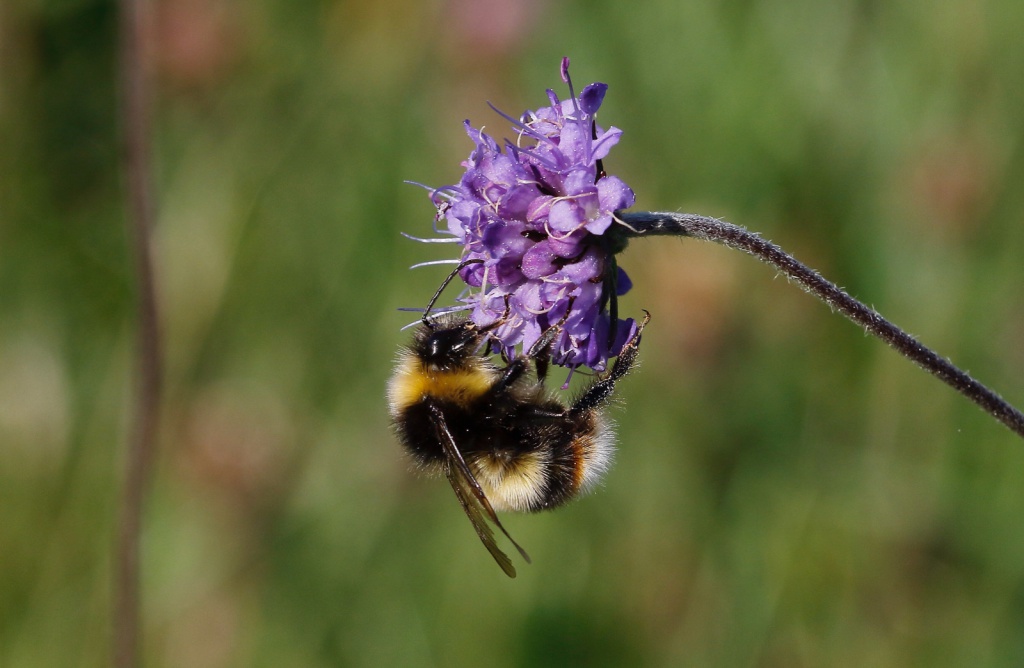
Successful bumblebee nests
This summer, over 1,200 bumblebee sightings have been shared from across the region. Of these, Red-tailed, Tree, Common Carder and Early Bumblebee have been the most encountered bumblebee species.
Summer sightings of new queen and male bumblebees are sure signs that a bumblebee nest has been successful. Sightings of a variety of male bumblebees have been shared, particularly males of the Red-tailed Bumblebee.
Although a little faded from the sun, male bumblebees can be observed through to September. New queens can also be observed fuelling up on late-season plants before setting of in search of a place to spend the winter.
In the North Pennines, males of the rarer Broken-belted Bumblebee have also been observed on Devil’s-bit Scabious, a favourite source of nectar for this special species.
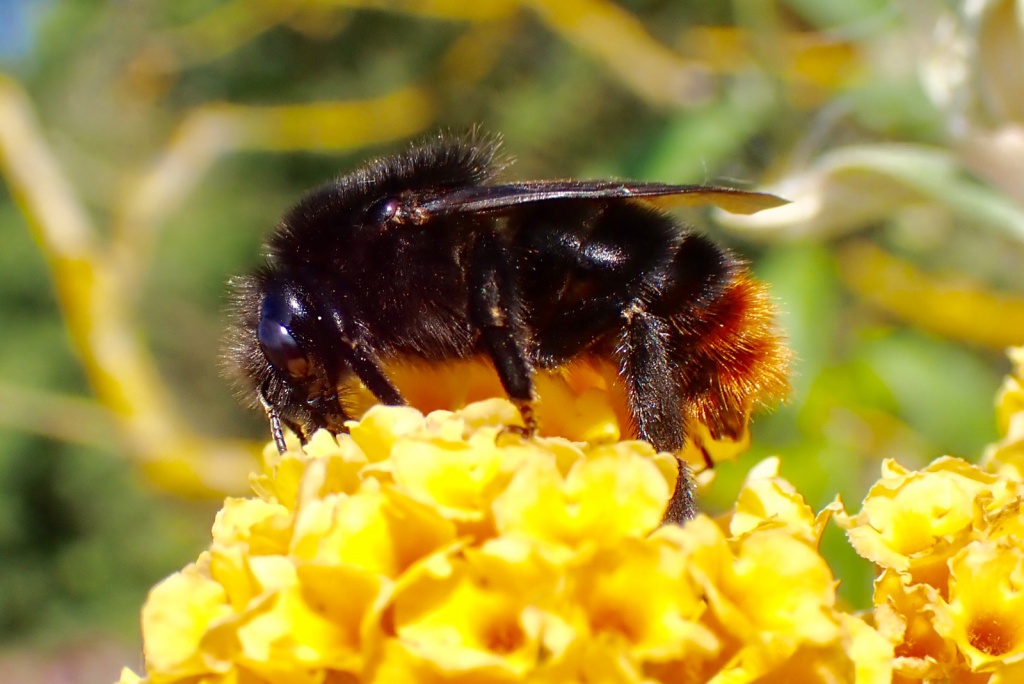
The cuckoo bumblebees
Sightings of five cuckoo bumblebee species have been shared: Forest, Vestal, Gypsy, Field, and Red-tailed Cuckoo Bee. Nest usurpers, females take over the nests of bumblebees and use their workers to look after their own young.
A target species of the North East Bee Hunt, the Red-tailed Cuckoo Bee has been sighted in both Northumberland and County Durham; along the coast, further inland in urban areas and in the uplands. Considered a scarcer bumblebee in the region, Bee Hunt records are revealing more about its distribution in the North East.
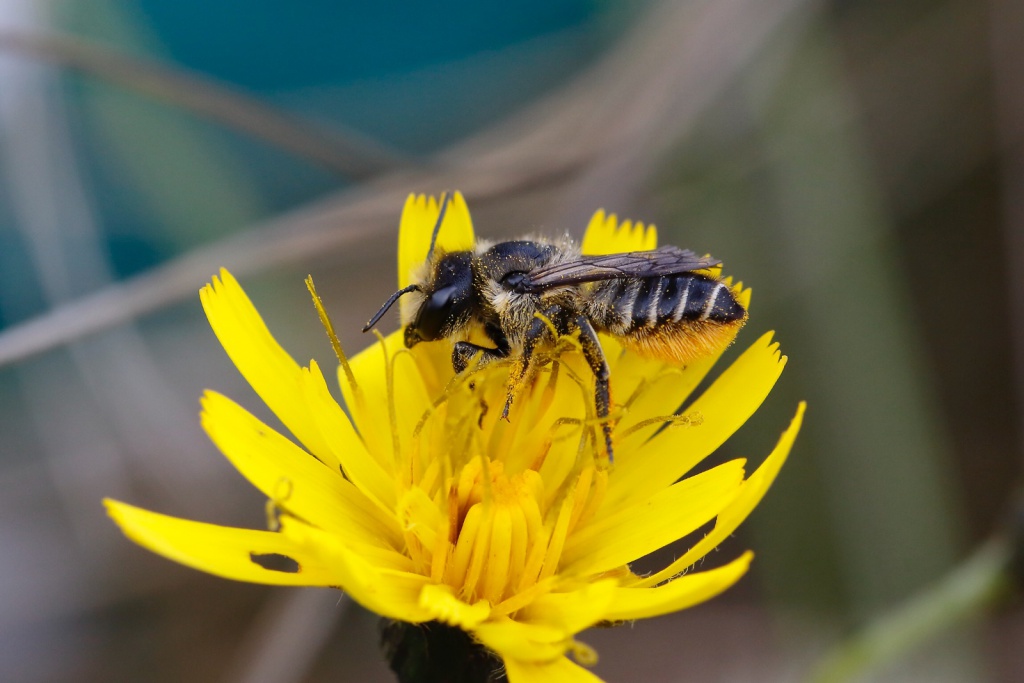
The leafcutter bees
As the activities of spring-flying solitary bees came to an end for the year, the leafcutter bee season began. Sightings have been shared of garden species, Patchwork and Willoughby’s, where they tend to use rose leaves to line their nests.
Their cuckoo bees, the Sharp-tailed Bees, have also been sighted along the coast and at Lindisfarne. Equipped with a sharp tail, females are able to drill into nest walls of Leafcutter Bee and lay their own eggs inside.
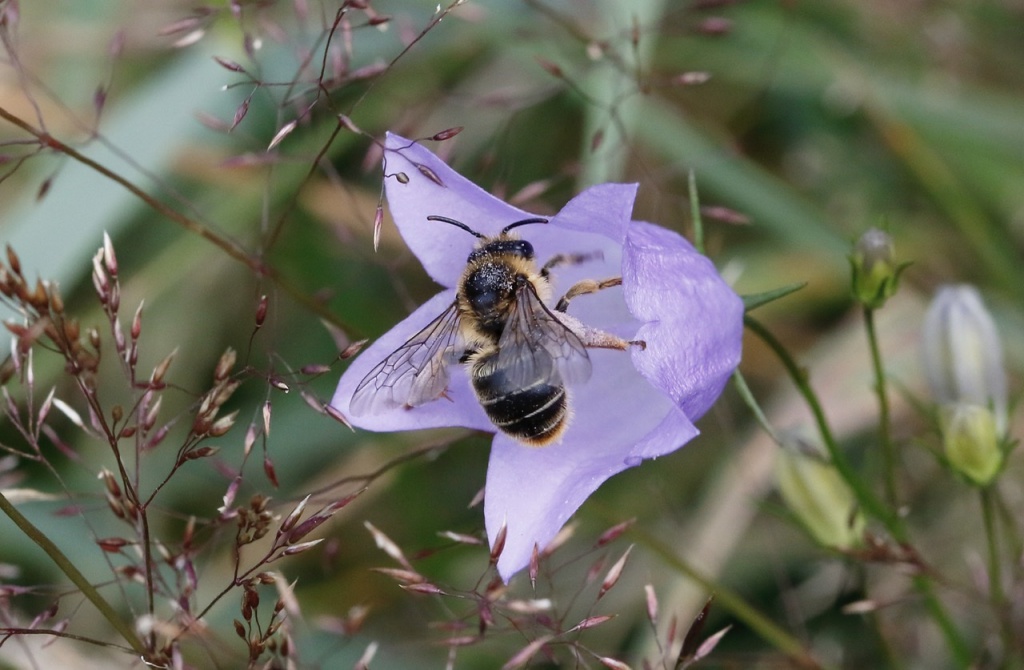
The specialists
The North East is also home to bee species that are more specialist in their habitat or food requirements.
The Harebell Blunthorn Bee is a summer-flying solitary bee that collects pollen exclusively from bellflowers, particularly Harebell. There are only three known sites in the region for this species, with the third site only discovered this summer at Beadnell.
Sightings have also been shared of bees associated with heathland areas. New areas have been discovered for the Tormentil Mining Bee, a small solitary bee that collects pollen almost exclusively from Tormentil. The heather specialist solitary bee, Heather Colletes Bee, has also been observed, both in Northumberland and the North Pennines.
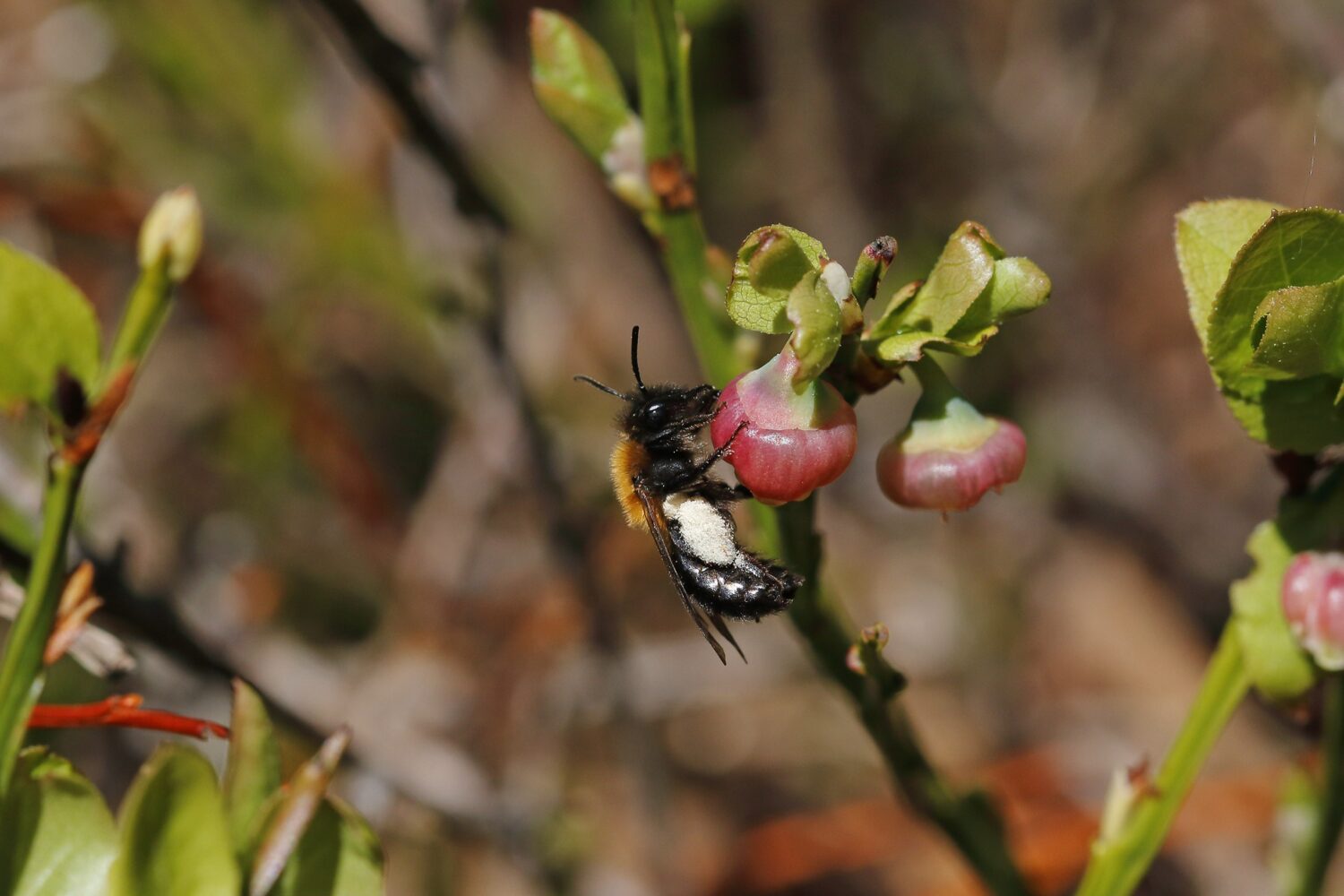
Join the North East Bee Hunt
Urban or rural, beginner or expert, we need your help to record eight distinctive bees across the North East this spring and summer.
Your records can add to our understanding of bees in the region and inform conservation and monitoring efforts.
Taking part is easy and every record counts, wherever you live in the region. Records of all bee species are encouraged.
